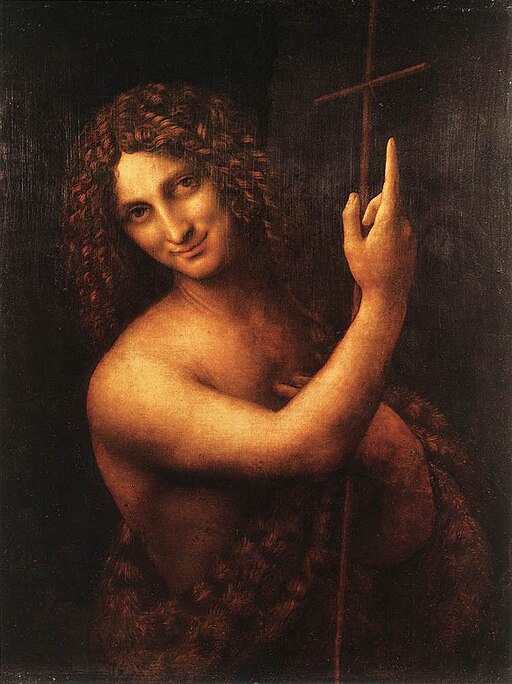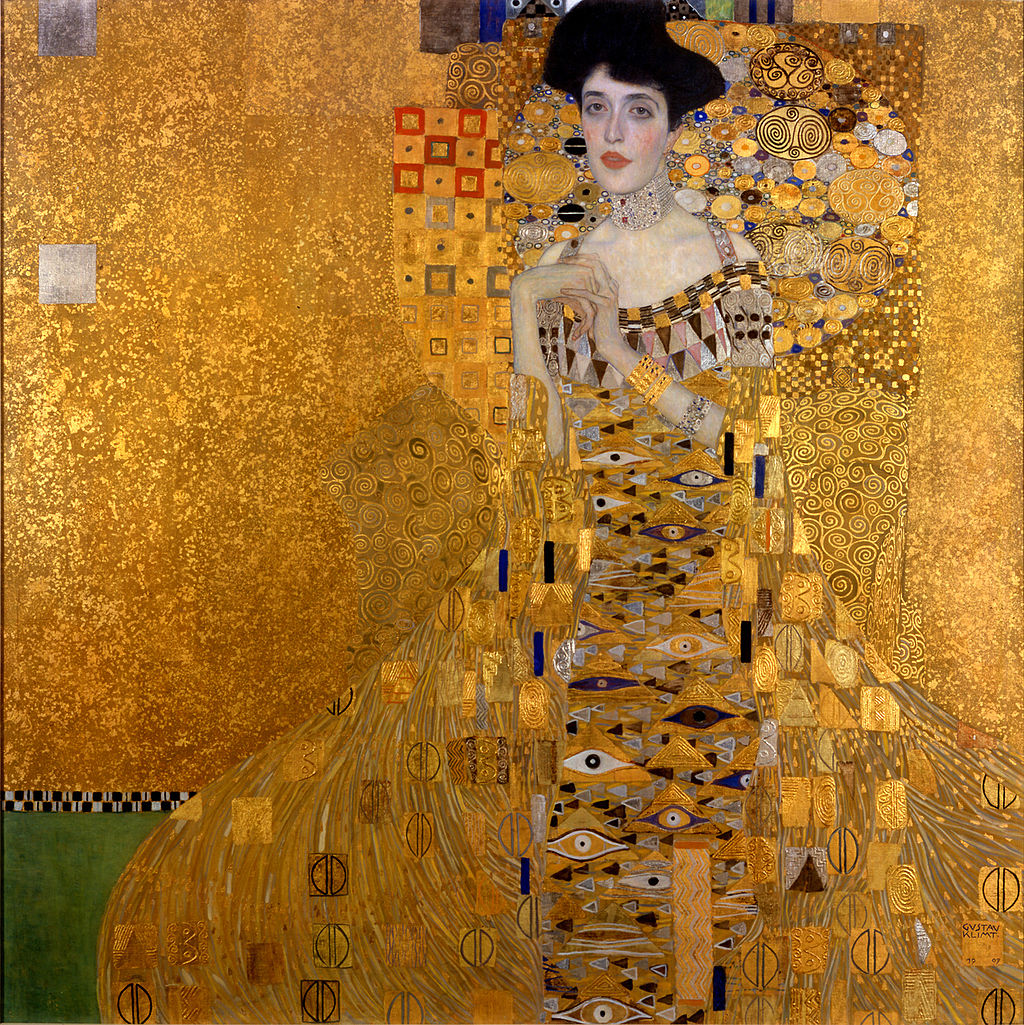
“The Fortune Teller” by Caravaggio shows a pretentiously dressed boy, having his palm read by a gypsy girl. The boy looks with anticipation as he gazes into her face, and she returns his gaze.
The boy’s feathered hat, the gloves, and the oversized dagger immediately tell us that the boy is not sophisticated or experienced.
The gypsy girl with her light linen shirt and her exotic wrap is also intended to represent a “type” rather than as a real person.
The Italian Baroque artist, Caravaggio, painted two versions of this painting. The first in 1594 which is now in the Capitoline Museums in Rome and his second version in 1595, which is in the Louvre Museum, Paris.
In this second version, the light is more radiant, and the cloth of the boy’s doublet and the girl’s sleeves more finely textured.
The boy becomes more childlike and more innocently vulnerable, the girl less wary-looking, leaning in towards him, more in command of the situation.
Close inspection of the first version of this painting reveals what the young man has failed to notice that the girl is removing his ring as she gently strokes his hand.
In this second version, this sleight of hand is not as clear to the viewer but is assumed based on the previous version of the painting.
“Good Luck” by Caravaggio (Capitoline Museums)

“Good Luck” by Caravaggio
“Good Luck” by Caravaggio was the first version, which shows the girl can be seen removing his ring. Caravaggio was one of the founders of genre painting in European art.
At the time, Genre Paintings mainly depicted scenes of everyday life, but with a hidden or underlying meaning intended to communicate a moral theme.
The theme of a young man inexperienced in the affairs of life encountering a lady who is experienced and shrewd proved to be a favorite subject.
The young boy is carried away by the gentle touch of her fingers. He does not notice that he is being relieved of his ring.
The composition does not include any background details to indicate the time and place but instead is focused on the encounter of two very different individuals, participating in an exchange that is timeless and universal.
Genre Art
Genre art is the pictorial representation of scenes or events from everyday life, such as domestic settings, building interiors, festive occasions, inn or market scenes, and street scenes.
Such genre works may be realistic, imagined, or romanticized by the artist.
Genre works of the Dutch Golden Age and Flemish Baroque painting may also be used as an umbrella term for painting in various specialized categories.
Categories such as still-life, marine art, architectural painting, and animal painting, as well as genre scenes proper where the emphasis is on human figures.
Paintings were divided into a hierarchy of genres, with history painting at the top, as the most challenging and therefore prestigious, and still life and architectural painting at the bottom.
Caravaggio
Caravaggio (1571 – 1610) was active in Rome, Naples, Malta, and Sicily from the early 1590s to 1610. His paintings combine the realistic observation of the physical and emotional human situation with the dramatic use of lighting.
He made the technique of darkening shadows and transfixing subjects in bright shafts of light his dominant stylistic element.
His influence on the new Baroque style that emerged from Mannerism was profound. In the 20th century, interest in his work revived, and his importance to Western art has been elevated.
Caravaggio trained in Milan before moving in his twenties to Rome. He developed a considerable name as an artist, and as a violent and provocative man.
A brawl led to a death sentence for murder, which forced him to flee to Naples. There he again established himself as one of the most prominent Italian painters of his generation.
He traveled in 1607 to Malta and on to Sicily and pursued a papal pardon for his sentence.
In 1609 he returned to Naples, where he was involved in a violent clash; his face was disfigured, and rumors of his death circulated.
Questions about his mental state arose from his erratic and bizarre behavior. He died in 1610 under uncertain circumstances while on his way from Naples to Rome.
Reports stated that he died of a fever, but suggestions have been made that he was murdered or that he died of lead poisoning.
Caravaggio Insights
- Caravaggio is a small town near Milan where Caravaggio was born, around 1571, and from where he took his nickname.
- Caravaggio became an orphan at age 11. The bubonic plague killed most of his family.
- Caravaggio was an essential pioneer of the chiaroscuro technique.
- Almost all of his works portray a single light source, illuminating the action.
- Caravaggio had a violent temper, which often got him into fights.
- Caravaggio liked to include himself in his works.
- Caravaggio was fiercely competitive and scathing of his artistic rivals.
- In 1606 he fled Rome after he killed a man in a brawl.
- Caravaggio had a death warrant issued for him by the Pope.
- He died in 1610, aged 38.
- Caravaggio left behind no letters, but from court records, we have many details of his offenses.
- In 2010, scientists found remains believed to be Caravaggio’s.
- His remains contained high levels of lead, and it is speculated that lead poisoning caused both the painter’s erratic behavior and his death.
- Caravaggio was never famous in his lifetime; however, many who saw his work realized that they embodied something amazingly new.
- Caravaggio’s style spread rapidly throughout Europe, after his death.
The Fortune Teller
- Title: The Fortune Teller
- Artist: Caravaggio
- Created: 1597
- Medium: oil on canvas
- Dimensions: Height: 0.9 m (38.9 ″); Width: 1.3 m (51.5 ″)
- Museum: Musée du Louvre
Good Luck
- Title: Good Luck
- Artist: Caravaggio
- Created: 1594 -1595
- Medium: oil on canvas
- Dimensions: Height: 1,150 mm (45.27″); Width: 1,500 mm (59.05″)
- Museum: Capitoline Museums
Caravaggio
- Name: Michelangelo Merisi (Michele Angelo Merigi or Amerighi) da Caravaggio
- Birth: 1571 – Milan, Duchy of Milan, Spanish Empire
- Died: 1610 (aged 38) – Porto Ercole, Grand Duchy of Tuscany
- Movement: Baroque
- Masterpieces:
- Supper at Emmaus(National Gallery, London)
- Supper at Emmaus (Brera Art Gallery)
- The Musicians
- The Taking of Christ
- The Fortune Teller (Louvre Museum)
- Good Luck (Capitoline Museums )
Caravaggio: Cardsharps & Fortune Teller
Virtual Tour of the Louvre- The Mona Lisa” by Leonardo da Vinci
- “Ruggiero Freeing Angelica” by Jean-Auguste-Dominique Ingres
- “The Valpinçon Bather” by Jean-Auguste-Dominique Ingres
- “The Turkish Bath” by Jean-Auguste-Dominique Ingres
- “Grande Odalisque” by Jean-Auguste-Dominique Ingres
- “Perseus and Andromeda” by Joachim Wtewael
- Self-portrait with Her Daughter, Julie by Louise Élisabeth Vigée Le Brun
- “The Virgin and Child with St. Anne” by Leonardo da Vinci
- “Louis XIV of France” by Hyacinthe Rigaud
- “The Massacre at Chios” by Eugène Delacroix
- “The Battle of San Romano” by Paolo Uccello
- “Virgin of the Rocks” by Leonardo da Vinci
- “The Death of Sardanapalus” by Eugène Delacroix
- “Psyche Revived by Cupid’s Kiss” by Antonio Canova
- “Liberty Leading the People” by Eugène Delacroix
- “The Arcadian Shepherds” by Nicolas Poussin
- “The Lacemaker” by Johannes Vermeer
- “The Money Changer and His Wife” by Quentin Matsys
- “The Fortune Teller” by Caravaggio
- “Portrait of Baldassare Castiglione” by Raphael
- “Charles I at the Hunt” by Anthony van Dyck
- “An Old Man and his Grandson” by Domenico Ghirlandaio
- “Vulcan Presenting Venus with Arms for Aeneas” by François Boucher
- “La belle ferronnière” by Leonardo da Vinci
- Self-Portrait by Élisabeth Sophie Chéron
- The Four Seasons by Nicolas Poussin
- “The Death of Marat” by Gioacchino Giuseppe Serangeli after Jacques-Louis David
- “Oath of the Horatii” by Jacques-Louis David
- “The Coronation of Napoleon” by Jacques-Louis David
- “Portrait of the Elector John Frederic the Magnanimous of Saxony” by Lucas Cranach the Elder
- “Leonidas at Thermopylae” by Jacques-Louis David
- “Entry of Alexander into Babylon” by Charles Le Brun
- The Raft of the Medusa by Théodore Géricault
- “Moses saved from the Waters” by Nicolas Poussin
- “The Battle of Anghiari” by Peter Paul Rubens – Copy of Leonardo da Vinci’s Lost Painting
- “Oedipus and the Sphinx” by Jean-Auguste-Dominique Ingres
- “Diana Discovering the Pregnancy of Callisto” Attributed to Paul Brill
- “Philosopher in Meditation” by Rembrandt
- “St John the Baptist” by Leonardo da Vinci
- “Cupid and Psyche” by François Gérard
- “The Fall of Icarus” by Merry-Joseph Blondel
- “Diana Huntress” by School of Fontainebleau
- “Diana Huntress” by Bartolomeo Passerotti
- “Jewish Wedding in Morocco” by Eugène Delacroix
- “Young Painter in his Studio” by Barent Fabritius
- “Painter in his Studio” by François Boucher
- “Imaginary Gallery of Ancient Roman Art” by Giovanni Paolo Panini
- “Picture Gallery with Views of Modern Rome” by Giovanni Paolo Panini
- “Bonaparte Visiting the Plague Victims of Jaffa” by Antoine-Jean Gros
- Portrait of Gabrielle d’Estrees and her sister the Duchess of Villars
- “The Wedding at Cana” by Paolo Veronese
- “Portrait of Antonio de Covarrubias” by El Greco
.
Caravaggio, The Fortune Teller
Caravaggio: A Life Sacred and Profane
Caravaggio – The Fortune Teller
‘The Fortune Teller’ from Act I of ‘Caravaggio’
~~~
“If Caravaggio were alive today,
he would have loved the cinema;
his paintings take a cinematic approach.”
– Martin Scorsese
~~~
Photo Credit 1) Caravaggio [Public domain]
Popular this Week








 Sponsor your Favorite Page
Sponsor your Favorite Page SEARCH Search for: Search Follow UsJoin – The JOM Membership Program
Sponsor a Masterpiece with YOUR NAME CHOICE for $5
Share this:
- Tweet
